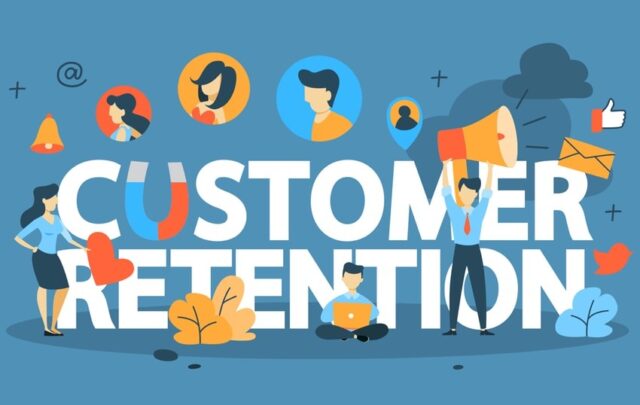In today’s competitive digital landscape, customer retention is paramount for businesses looking to foster loyalty and drive sustainable growth. While many factors contribute to customer retention—such as quality of service, pricing strategies, and marketing efforts—one area that often goes overlooked is web development. A well-designed website plays a crucial role in enhancing the customer experience, encouraging repeat visits, and ultimately retaining customers. In this blog, we will explore the key aspects of web development that impact customer retention and provide actionable insights for businesses.

1. User Experience (UX) Design
User experience (UX) design is at the heart of effective web development. A website that is easy to navigate, visually appealing, and responsive to user needs significantly enhances customer satisfaction.
Key Elements of UX Design:
- Intuitive Navigation: A clear and simple navigation structure allows users to find what they are looking for quickly, reducing frustration and encouraging them to explore more.
- Mobile Optimization: With the rise of mobile browsing, ensuring that your website is mobile-friendly is crucial. A seamless mobile experience fosters user engagement and increases the likelihood of return visits.
- Fast Load Times: A slow website can drive users away. Optimizing images and code can improve load times, keeping users engaged and reducing bounce rates.
2. Personalization
Personalization in web development enables businesses to tailor the user experience to individual customer preferences. This approach not only enhances user satisfaction but also increases the chances of repeat visits.
Strategies for Personalization:
- Customized Content: Displaying content based on user behavior and preferences can make visitors feel valued and understood. This can include personalized recommendations, tailored promotions, or relevant blog posts.
- User Accounts: Allowing customers to create accounts on your website can enable personalized experiences. Users can save their preferences, view order history, and receive targeted offers based on their past interactions.
3. Engaging Content
Content is king, and engaging content is vital for retaining customers. A well-developed website should include high-quality content that resonates with your audience.
Types of Engaging Content:
- Informative Blogs: Regularly updating your blog with valuable insights can position your brand as an industry leader and keep customers coming back for more.
- Video and Multimedia: Incorporating videos, infographics, and interactive content can captivate users and encourage them to spend more time on your site.
- User-Generated Content: Encouraging customers to share their experiences and reviews can foster a sense of community and provide social proof, making new visitors more likely to convert.
4. Customer Support Features
Incorporating customer support features into your website can greatly enhance the user experience and contribute to customer retention.
Essential Support Features:
- Live Chat: Offering real-time support through live chat can help resolve customer queries quickly, reducing frustration and building trust.
- Comprehensive FAQs: A well-organized FAQ section can address common concerns and guide users in finding the information they need without having to contact support.
- Contact Forms: Easy-to-find contact forms encourage customers to reach out with questions or concerns, showing that your business values their feedback.
5. Continuous Improvement
Web development is not a one-time effort; it requires ongoing monitoring and improvement to keep pace with changing customer needs and technological advancements.
Tips for Continuous Improvement:
- Analytics and Feedback: Use analytics tools to track user behavior on your website. Gathering customer feedback through surveys can provide valuable insights into areas for improvement.
- A/B Testing: Implement A/B testing to evaluate different design elements, content, or features. This data-driven approach can help you optimize your website for better performance.
- Stay Updated with Trends: Keeping an eye on web development trends and customer preferences can help you adapt your website to meet evolving expectations.
Conclusion
The role of web development in customer retention cannot be overstated. By focusing on user experience, personalization, engaging content, customer support features, and continuous improvement, businesses can create a website that not only attracts visitors but also encourages them to return. In a world where customer loyalty is increasingly elusive, investing in web development is a smart strategy to ensure long-term success and retention.


No responses yet